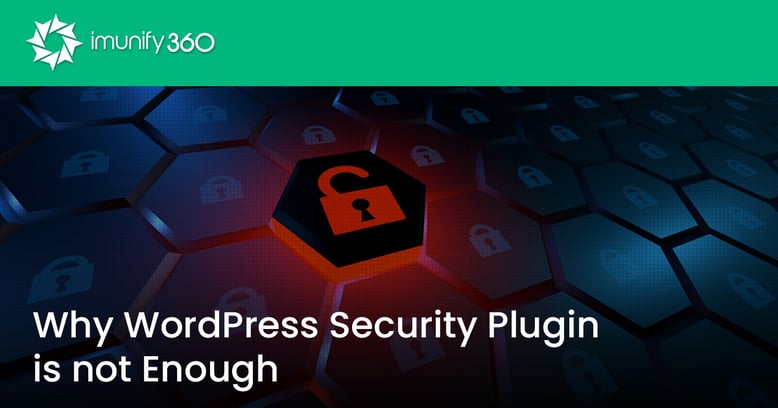Why WordPress Security Plugin is not Enough

As a website owner, you understand the importance of keeping your site secure from the constantly growing cyber threats that lurk in the digital realm. While WordPress security plugins can offer some protection, they often fall short when compared to full-system security software. In this blog post, we'll delve into the limitations of WordPress security plugins and explain what you should look for in a security solution.
Limitations of WordPress Security Plugins:-
They are limited to PHP-based attacks.
WordPress security plugins are designed to protect your website from attacks that target PHP, the scripting language that powers WordPress. However, this narrow focus leaves your site vulnerable to a wide range of threats that don't involve PHP, such as:
→ Control panel password attacks: Hackers often target administrative control panels to gain unauthorized access to your website, which can lead to data breaches or website defacement.
→ Attacks against non-PHP components: Many components of a website, including the web server, cron jobs, and WebDAV, are not written in PHP. WordPress security plugins can't protect these components from targeted attacks, leaving them exposed to potential threats.
- Limited visibility due to PHP restrictions.
Since WordPress security plugins operate within the PHP environment, they often have restricted access to system resources. This limitation hampers the effectiveness of the plugin's anti-malware system, resulting in reduced visibility and a compromised ability to detect and remove threats. - Limited remediation capabilities.
In the event of a successful attack, malware can potentially overwrite or disable your WordPress security plugin. This leaves your site defenseless and unable to remove the malicious software. Moreover, the limited scope of these plugins means they may be unable to fully remediate the damage caused by an attack, leaving your website vulnerable to further exploitation.
What You Should Look For in a Security Solution
When evaluating full-system security software, you should consider a solution that addresses the limitations of WordPress security plugins and provides a robust, multi-layered defense against a wide range of threats. You should look for features like:
✅ Comprehensive protection against various attack vectors
Your solution should not only guard against PHP-based attacks but also against threats targeting control panels, web servers, cron jobs, databases, and other non-PHP components. This comprehensive approach ensures that your entire website infrastructure is safeguarded from cyber threats.
✅ Enhanced visibility and detection capabilities
Look for a tool that operates at the system level, which allows it to access the full range of system resources. This, in turn, provides superior visibility into potential threats, enhancing the software's ability to detect and eliminate malware before it can compromise your website.
✅ Advanced remediation and incident response
Consider advanced remediation capabilities that go beyond what WordPress security plugins can achieve. The software can not only detect and remove malware but also repair the damage caused by an attack. An added bonus would be an incident response system that provides real-time alerts and allows for swift action to mitigate threats.
✅ Continuous updates and proactive defense
It’s critical to stay ahead of emerging threats through regular updates, ensuring your website remains protected against the latest attack methods. Furthermore, your software should incorporate proactive defense measures, such as intrusion detection and prevention systems (IDS/IPS), web application firewalls (WAF), and machine learning-powered threat analysis, to effectively combat evolving cyber threats.



 6 Layers of Protection
6 Layers of Protection





.png?width=115&height=115&name=pci-dss%20(1).png)
